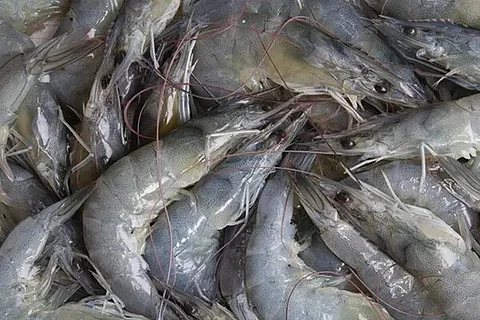

Producers in Latin America and Southeast Asia have already access to the project's equipment.
GSA
Ace Aquatec has partnered with the Shrimp Welfare Project to improve shrimp welfare providing 24 shrimp producers globally with electrical stunning devices at no cost until the end of 2025.
Producers benefiting from this program must stun a minimum of 2,000 metric tons (MT) of shrimp annually and commit to improving practices to the best of their abilities.
According to the Global Seafood Alliance, producers in Latin America and Southeast Asia have already access to the project's equipment.
Regarding this initiative, CSMO at Ace Aquatec Tara McGregor-Woodhams indicated: "This partnership is taking steps to address the issue on an industry-wide scale, and we hope to expand it further in the coming months and years."
Another aim of this collaboration is to highlight the need to implement other slaughter methods for shrimp. It is believed that immersion in an ice-water slurry, a widely used method, does not adequately stun decapods during the slaughter process.
Furthermore, with the Ace Aquatec's Prawn Humane Stunner Universal (A-HSUTM) technology prawns lose consciousness immediately and are maintained in the fields in order to keep long insensibility after removal from the water.
Moreover, Ace Aquatec partnered in 2022 with Regal Springs to introduce in-water high-welfare solutions into their main tilapia processing facilities after successful trials in Mexico. The pilot was called Humane Stunner Universal System (HSU).
Finally, the Head of Programs at Shrimp Welfare Project, Krzysztof Wojtas, assured: "We are keen to actively collaborate with the shrimp farming industry and support them in making the transition towards humane slaughter. This partnership is a significant step in advancing our mission, and we look forward to seeing the positive impact it will have on shrimp welfare globally."
Shrimp Welfare Project is the first organisation focusing exclusively on the welfare of these animals. This has been made possible, in part, thanks to organisations such as Charity Entrepreneurship and Rethink Priorities raising the issue of invertebrate suffering.
Its main goal is the HSU, which aims to promote the adoption of electrical stunning technology in the shrimp industry. As part of this initiative, it makes agreements to purchase electrical stunners for certain producers, who commit to stun a minimum of ~100,000,000 shrimps per year. Additionally, its work involves dialogues with retailers to encourage them to publish welfare/responsible sourcing policies.
